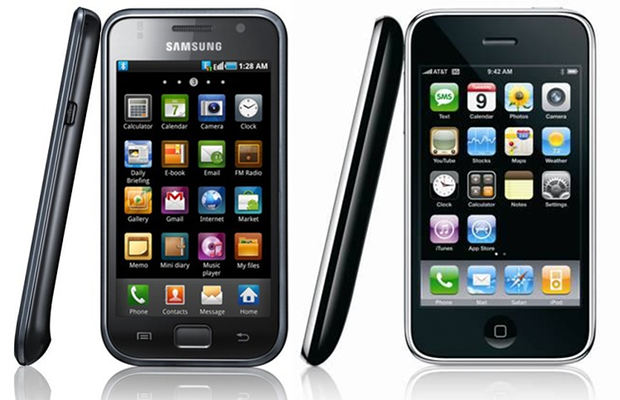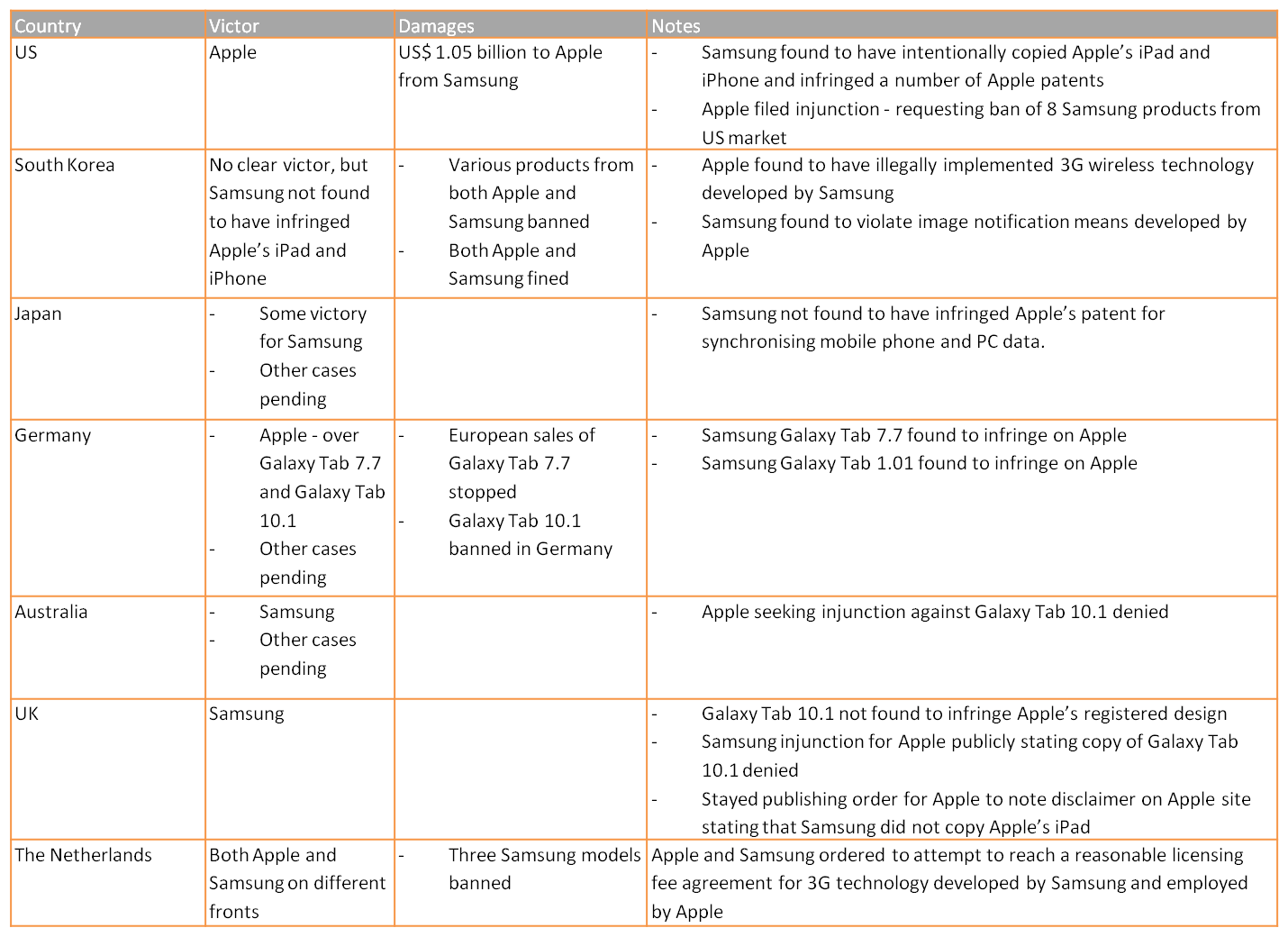“Imagination is the beginning of creation. You imagine what you desire, you will what you imagine, and at last, you create what you will” – George Bernard Shaw

Image taken from Appstorm
Technology. Whether we’re tendentious traditionalists or tenacious techno- enthusiasts, we all need and have made use of it. Communication forms the backbone of society and it is perhaps the fundamental recognition of this that has prompted large communication device companies to capitalise on the ever growing desire to share aspects and information which form part of our daily lives. The infinite supply and demand loop does however, have its kinks – competition in this market may easily lead to blurring of the lines when it comes to tracking the births of creative ideas. Such is the case with techno tycoons Apple and Samsung.
The much talked-about battle has spurned multiple cases in a number of countries – and the outcomes have been a one-up-one-down touch and go scenario for each side. The cinch of course lies in the difference in law and practice in each territory, although the same general factors are considered in order to determine infringement. Some of these factors include
- the level of obviousness of a design – was it copied or is it simply so obvious that it could have been easily recreated without any dependence on existing designs;
- the similarity of the disputed products – how alike are the products really? Without getting bogged down by the technicalities, are the devices or employed systems substantially similar to warrant being considered infringement?
- and finally, dates of success and launch of competitive products – these may provide some indication as to how intentional any similarities may indeed be.
Apple accused Samsung of infringing a number of utility and design patents ranging from tapping a screen for zooming and centring to icon shape whilst Samsung rebutted with 3G technology patent infringement claims and a number of utility patent infringements claims.
Here’s a quick summary of the outcomes as they stand:

Clear differences in ruling are evident for the same cases in different territories. What then can we learn from this large scale public battle which can be applied to daily dealings with IP? The biggest question to ask yourself as an inventor is – how unique is your invention really? As a businessman – what are the territories that will prove most marketable for your product or investment? Besides being liable to pay possible fees for infringement, a product ban could essentially be the hardest hitting effect of an infringement case. Conducting due diligence and determining where licences could be paid or agreements made may avoid a long string of costly, drawn out battles.
At what point though does a large scale case such as that of Apple vs Samsung become more of a market monopoly ploy than a focus on protection of true creativity? Patent protection aims to provide creative inventions with the opportunity to generate income to the inventor, but a fine line has been seen to exist between this and staving off creativity from healthy competition. Finding the balance to walk this line is the ultimate goal of intellectual property protection strategies. The global scale of this case is likely to demonstrate the extent of the effect which varying patent laws in different countries have on the outcome of which side of the fine line each country falls. Patent protection should inspire rather than stymie creativity…as Dr Seuss put it:
”Think left and think right
and think low and think high.
Oh , the things you can think up
if only you try!” – Dr Seuss.
By Ghabiba Weston
